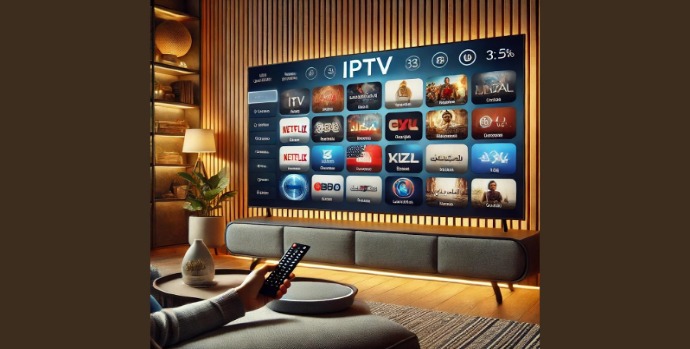In a computerized world, the integration of sophisticated systems ensures that the user experience is seamless.
One of the core parts of this process is backend integration, which integrates different systems and services required to support modern applications.
Xboard Reality 后端对接 is the most complex platform for virtual reality. Its process of backend integration or后端对接 ensures a smooth thing here. Let us give you a step-by-step walkthrough to integrate Xboard Reality’s backend.
Whether you’re a developer, a system integrator, or someone new to the backend systems, this exhaustive article will provide you with the necessary information you want to know about integrating the backend for your own business from Xboard Reality.
What is Xboard Reality?
Well, before we dive deeper into the backend integration, it’ll be great if we glance briefly at what Xboard Reality is.
Xboard Reality is one of the strong virtual reality platforms that make it possible for users to interact with virtual environments in a highly immersive manner.
It is usually used for various applications, including gaming, simulations, and educational tools.
For developers, Xboard Reality offers an array of features that enhance the user experience. The potential of the platform can be fully leveraged only if it is seamlessly combined with the backend systems.
Thus, this method ensures that data flows correctly between the VR interface and the servers, ensuring real-time interactions and updates.
Why is Backend Integration Important?
Backend integration (后端对接) is important because it connects the front end (what users interact with) to the backend systems that work with the data, manage resources, and store information.
Without smooth backend integration, even the most advanced VR systems can face performance issues, delays, or errors.
In the case of Xboard Reality, backend integration ensures that the VR system can interact with databases, APIs, and other services that provide necessary data in real-time.
For instance, if your VR game relies on live data (such as a score or leaderboard), the backend ensures that the front end of the VR system can pull this information without lag or issues.
Key Components of Xboard Reality 后端对接
The Xboard Reality 后端对接 process involved several components. All play critically in the process of integration. Knowing these is an aid to the integration process.
APIs (Application Programming Interfaces):
APIs are very important in backend integration. They serve as connecting bridges to enable the VR platform to communicate with other external systems and services.
Xboard Reality uses APIs to fetch and send information between the VR system and the backend servers.
Databases:
The backend of any system depends on databases to store and retrieve information
Xboard Reality uses databases to handle user data, session information, and other critical data points that need to be synchronized with the virtual environment
Server Management:
Server management Involves setting up and maintaining the servers that power the backend system. Xboard Reality’s integration requires robust server infrastructure to ensure it can handle VR applications’ demands.
Authenticate & Security Data needs to be secured. Only registered users should access features or information. Xboard Reality integrates security protocols for backend management of user authentication, data encryption, and secure transactions. Real-Time Communication
Many applications that use Xboard Reality require real-time data exchange.
Whether it’s updating user positions in a virtual world or sending live notifications, real-time communication is key to smooth integration.
Steps to Integrate Xboard Reality 后端对接
Now that we’ve covered the key components, let’s walk through the actual steps of Xboard Reality 后端对接.
Step 1: Set Up Your Backend Infrastructure
The first phase of the integration is setting up the back-end infrastructure.
This includes the selection of a suitable server environment, for example, cloud-based or on-premise, configuration of databases, and alignment of servers to handle the kind of traffic and amount of data generated by Xboard Reality.
Ensure that the servers are bandwidth and resource-rich to support the performance requirements of the VR system.
You should also consider scalability, especially if you plan to expand your virtual reality application.
Step 2: Select the Right APIs
Next, select the appropriate APIs that you’ll need to integrate Xboard Reality with your backend.
APIs are the most common way to exchange data between the VR system and the server, and they’ll be essential for connecting your application with databases, authentication systems, and other services.
You may need to create custom APIs or use third-party APIs, depending on your needs.
For example, if your application needs real-time notifications, you’ll need to integrate messaging APIs such as WebSockets or Firebase Cloud Messaging.
Step 3: Establish Database Connections
Database integration is another crucial step. Xboard Reality requires seamless communication with databases to store and retrieve data about users, VR sessions, and application settings.
Set up the database schema for your VR application in terms of particular data needs. For example, you may require separate tables to manage user profiles, session histories, achievements, or any kind of game-related data.
With this connection, you will be able to update your information in real-time and ensure accurate data management.
Step 4: Implement Authentication and Security
Security is always a priority when dealing with backend systems. For Xboard Reality 后端对接, implementing secure authentication is essential.
This ensures that only authorized users can access certain features of the VR application.
Consider using OAuth, JWT (JSON Web Tokens), or another authentication protocol to secure user login and session management.
Data encryption is also crucial, especially if you’re handling sensitive user information or in-app purchases.
Step 5: Test the Integration
Once all the components are set up, the next step would be to test the integration. Thorough testing is very much indispensable to ensure everything is working accordingly.
Testing would include data transfer, real-time communication, and security protocols.
Simulate VR sessions, user logins, and interactions with the backend to detect where potential issues arise.
It is way better to catch errors during testing than after the launch since little glitches in backend communication can get in the way of the user experience.
Step 6: Monitor and Optimize
After you successfully integrate, always keep on monitoring just to ensure that the back-end system is good.
Use analytics tools on your servers, APIs, and databases. It allows you to pinpoint the bottlenecks or areas of improvement.
Optimizing the backend infrastructure, scaling the system according to need, and updating APIs for better performance can be the long-term success factors of your Xboard Reality application.
Common Challenges in Xboard Reality 后端对接
As with any backend integration, Xboard Reality 后端对接 is not without its challenges. The most common ones include:
Latency and Performance Issues:
VR applications require high-performance backend systems. Delays in data retrieval or lag can destroy the immersive experience.
Ensure that your infrastructure supports large data requests very rapidly.
Data Synchronization:
Keep the data synchronized across your VR system and backend in a real-time manner. The data must be updated instantly to maintain the continuity of all platforms.
Security Issues:
Any internet connectivity-based application is exposed to cyber-attacks. Incorporate all security measures that may support the protection of user data against illegal access.
Conclusion
Xboard Reality-backend integration constitutes a very important step in developing an immersive and functional virtual reality experience.
The integration process is as follows:
set up a solid backend infrastructure, API, databases, and security systems connection, and test everything to put it to work With proper planning, close observation, and constant monitoring, you should be able to successfully integrate Xboard Reality into your system.
Whether you are developing a game, an education application, or a simulation, integration with the backend plays an essential role in creating an intuitive and interactive virtual reality for your users.
By completing this tutorial, you have learned the entire process of implementing Xboard Reality 后端对接. So let’s get started with integration.











